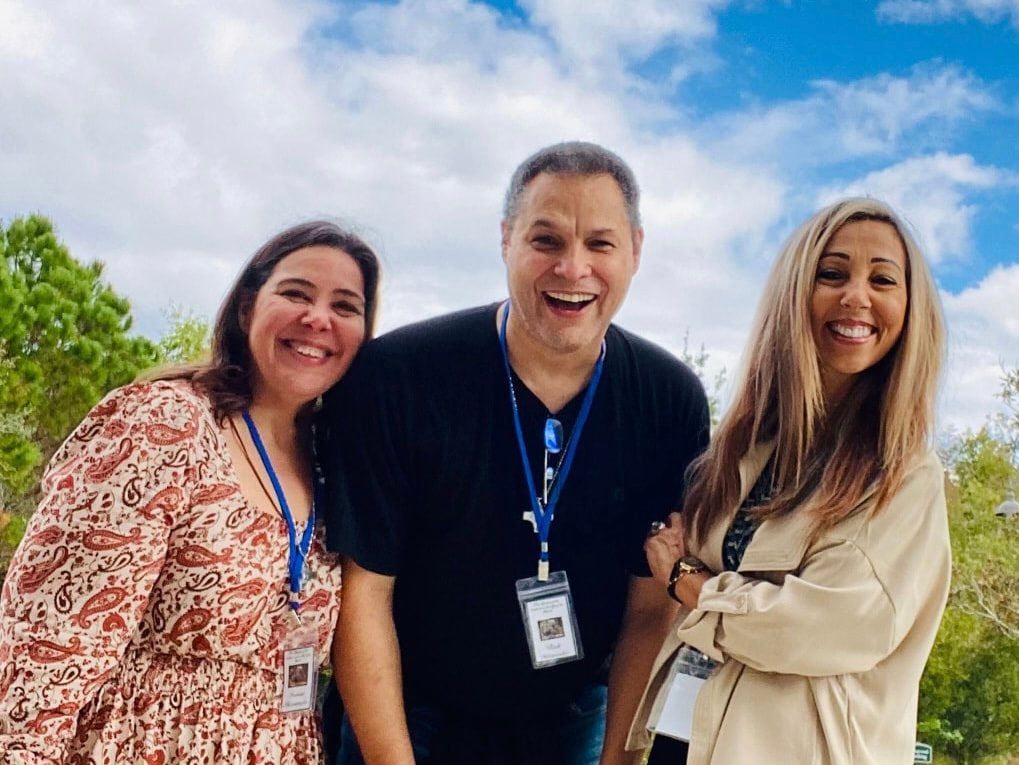ELISHEBA BLOGLaura, Ivonne, and Rick
write about their lives in the Eucharist. |
|
I am often amused by the differences between the English and Spanish versions of certain phrases. This amusement often turns into deeper insight as hidden clues initially lost in translation, reveal themselves to me. One of these is New Year’s Eve. It is directly translated as Víspera de Año Nuevo, but growing up, it was always referred to as Año Viejo, meaning “Old Year.” The difference between these two titles is the focus of a moment in time. The same thing happens with Christmas Eve, which I still refer to as Nochebuena, which literally means “Good Night.” One focuses on what is ahead, while the other one focuses on what is being left behind. Yet they both reveal the impossibility of grasping a moment in time. “Auld Lang Syne” is a Scottish song often played on New Year’s Eve, right at the stroke of midnight, a moment that holds both the old year and the new between twelve bell strikes. The song begins with a rhetorical question:
For old long since… this is the literal translation of the phrase “auld lang syne,” but it can generally mean “times long past,” “times long ago,” or “old times.” It is precisely in a moment that seems to be outside of time that hearts wonder how to deal with this thing called time.
“All in God’s time.” This is a phrase I hear myself say as a call to surrender. It is a reminder that God has a plan, and it is often not in line with my schedule. Whether it is a spouse’s illness, a needy neighbor, or a crying baby in the middle of the night, Jesus shows up and interrupts our time.
Emmanuel means “God is with us,” not “God was with us” or “God will be with us.” He IS the great I AM. Always present, always being, always creating His life within us. In a letter to Mrs. Mathilde Giraud-Jordan on May 19, 1868, St. Peter Julian Eymard writes:
I have discovered through prayer that “God is with us” often means “God waits with us.” Sometimes, when Jesus brings to mind an area of my heart that needs healing, my response is that I’m not ready to deal with that yet. What does He do? He is patient and kind (Cf. 1 Corinthians 13:4). He doesn’t push me; He doesn’t shame me; He does not sigh and show impatience with me. Looking at me, He loves me (Cf. Mark 10:21). He remains with me. He gives me time. And it is precisely in that moment that He begins to heal me. It is in the gift of that space and time that I experience true freedom. I grow in trust as my fears lose their grip and the lies disappear. Knowing that God is willing to wait for me, to wait with me, that He will never leave me, I remember that He has always been with me. Whether it is at the stroke of midnight on New Year’s Eve, the stroke of midnight on Christmas Eve, or just at a moment in time, hidden within every strike of the bell is a call to remember, to see within the veil… a call to enter into the mystery of God’s time.
God is with us… the time is now… let Him enter our hearts… let Him wait with us as we wait for each other, for we are all together, held in God’s time.
0 Comments
Your comment will be posted after it is approved.
Leave a Reply. |
Categories
All
FOLLOW US ON SOCIAL MEDIA:
AuthorsWe are Ivonne J. Hernandez, Rick Hernandez and Laura Worhacz, Lay Associates of the Congregation of the Blessed Sacrament, and brothers and sisters in Christ. |
Copyright © 2024 Elisheba House Inc.
Elisheba House is a 501(c)(3) non-profit organization. Federal Tax ID Number 84-1894146
Florida registration for Solicitations of Contributions #CH71652
A COPY OF THE OFFICIAL REGISTRATION AND FINANCIAL INFORMATION MAY BE OBTAINED FROM THE DIVISION OF CONSUMER SERVICES BY CALLING TOLL-FREE (800-435-7352) WITHIN THE STATE. REGISTRATION DOES NOT IMPLY ENDORSEMENT, APPROVAL, OR RECOMMENDATION BY THE STATE.
Florida registration for Solicitations of Contributions #CH71652
A COPY OF THE OFFICIAL REGISTRATION AND FINANCIAL INFORMATION MAY BE OBTAINED FROM THE DIVISION OF CONSUMER SERVICES BY CALLING TOLL-FREE (800-435-7352) WITHIN THE STATE. REGISTRATION DOES NOT IMPLY ENDORSEMENT, APPROVAL, OR RECOMMENDATION BY THE STATE.





 RSS Feed
RSS Feed